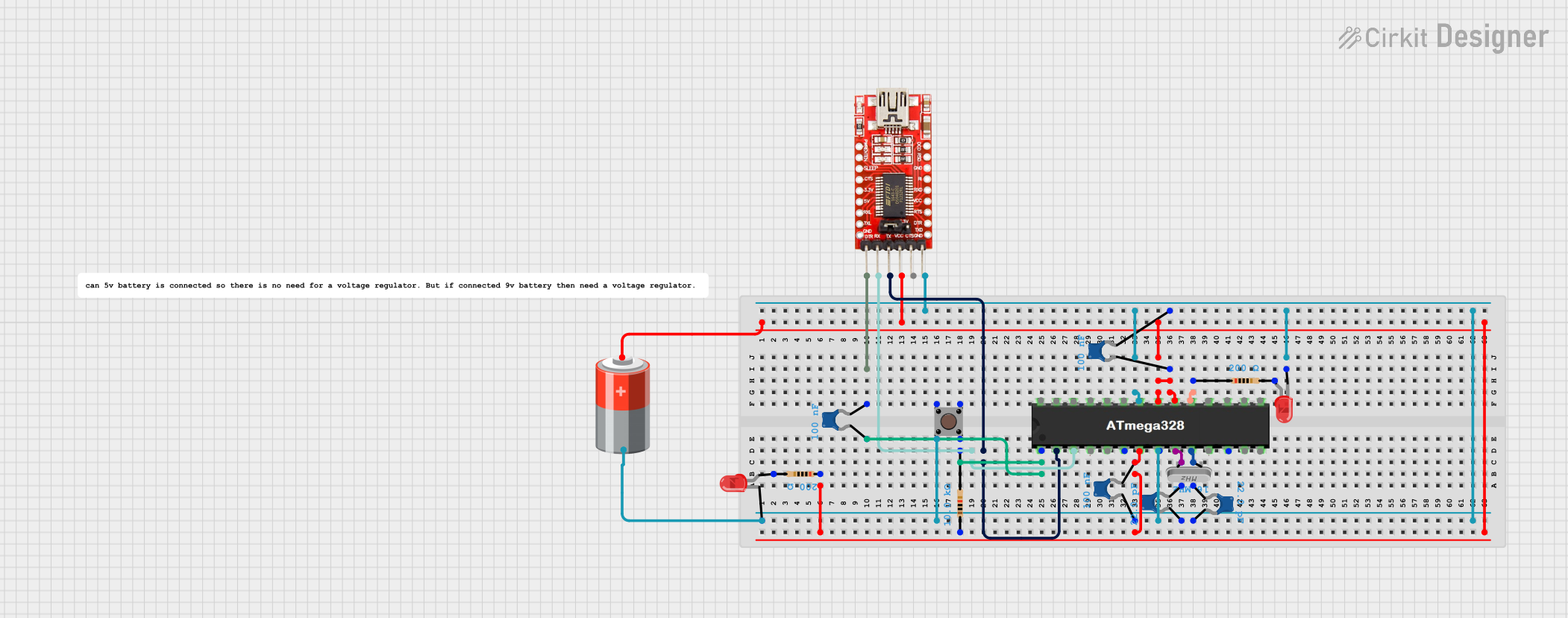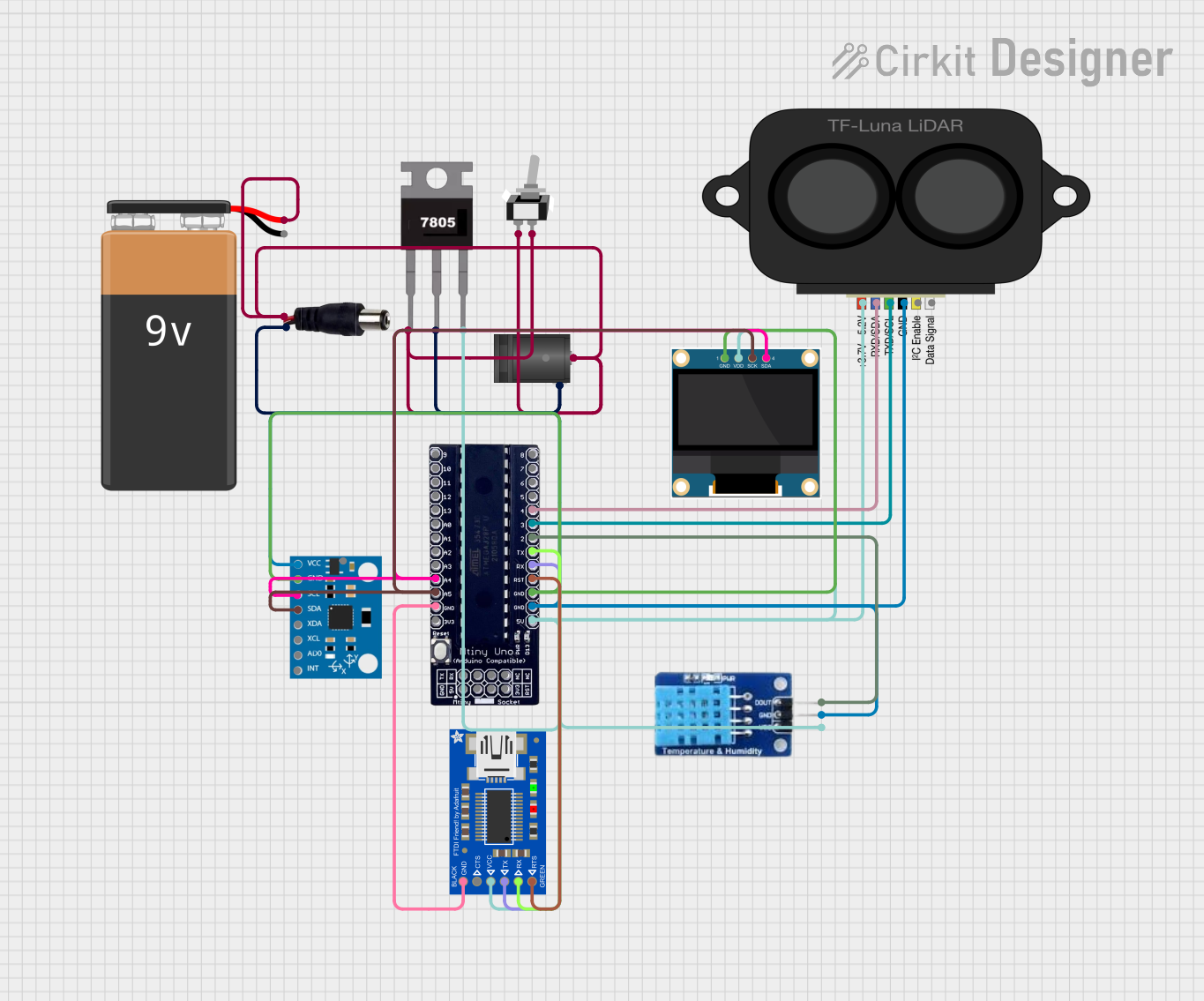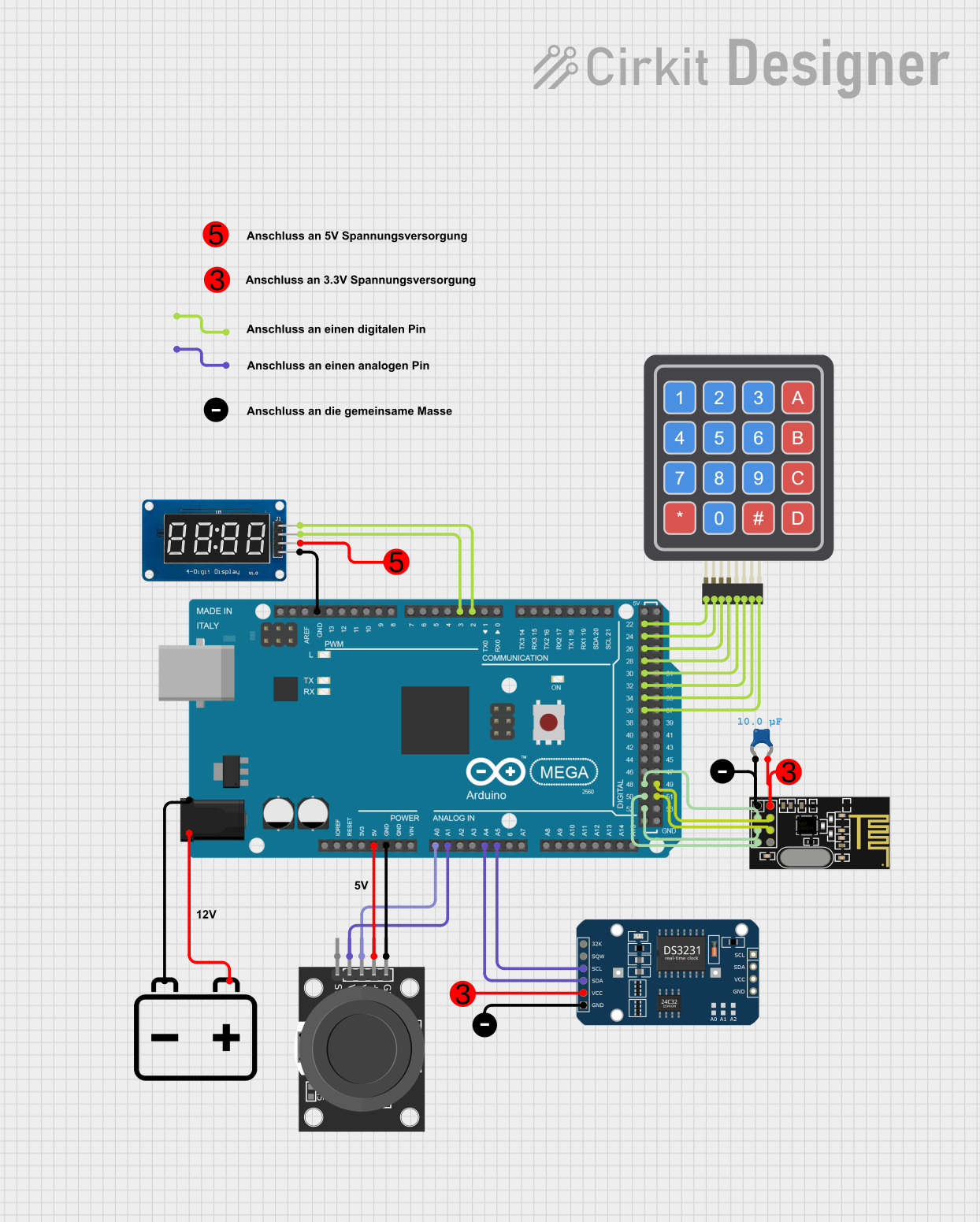
How to Use Atmega168: Examples, Pinouts, and Specs

 Design with Atmega168 in Cirkit Designer
Design with Atmega168 in Cirkit DesignerIntroduction
The Atmega168 is a versatile and powerful microcontroller that belongs to Atmel's extensive AVR family. It is designed for a wide range of applications, from simple DIY projects to more complex embedded systems. With its RISC-based architecture, the Atmega168 provides a balanced combination of performance and power efficiency, making it an ideal choice for battery-operated devices, robotics, automation systems, and sensor interfacing.
Explore Projects Built with Atmega168

 Open Project in Cirkit Designer
Open Project in Cirkit Designer
 Open Project in Cirkit Designer
Open Project in Cirkit Designer
 Open Project in Cirkit Designer
Open Project in Cirkit Designer
 Open Project in Cirkit Designer
Open Project in Cirkit DesignerExplore Projects Built with Atmega168

 Open Project in Cirkit Designer
Open Project in Cirkit Designer
 Open Project in Cirkit Designer
Open Project in Cirkit Designer
 Open Project in Cirkit Designer
Open Project in Cirkit Designer
 Open Project in Cirkit Designer
Open Project in Cirkit DesignerTechnical Specifications
Key Technical Details
- Microcontroller: ATmega168
- Operating Voltage: 1.8 - 5.5V
- Input Voltage (recommended): 7-12V
- Input Voltage (limits): 6-20V
- Digital I/O Pins: 23
- Analog Input Pins: 6
- PWM Channels: 6
- DC Current per I/O Pin: 40 mA
- DC Current for 3.3V Pin: 50 mA
- Flash Memory: 16 KB (of which 2 KB used by bootloader)
- SRAM: 1 KB
- EEPROM: 512 bytes
- Clock Speed: 16 MHz
Pin Configuration and Descriptions
| Pin Number | Name | Description |
|---|---|---|
| 1 | PC6 | Reset Pin |
| 2-3 | PD0-PD1 | Serial Communication (RX/TX) |
| 4-5 | PD2-PD3 | External Interrupts (INT0/INT1) |
| 6-11 | PD4-PD7, PB0-PB1 | General Purpose I/O |
| 12-17 | PB2-PB5, PC0-PC1 | PWM Output/General I/O |
| 18-23 | PC2-PC5, ADC0-ADC5 | Analog Input Pins |
| 24-28 | PC6-PC7, PD0-PD1, PD2 | Additional I/O Pins |
| 29 | AREF | Analog Reference Pin |
| 30 | GND | Ground |
| 31 | AVCC | Analog Power Supply |
| 32 | PB6 | Oscillator Pin |
| 33 | PB7 | Oscillator Pin |
Usage Instructions
Integrating Atmega168 into a Circuit
Power Supply: Ensure that the Atmega168 is powered with a stable voltage source between 1.8V and 5.5V. For most applications, a regulated 5V supply is recommended.
Clock Source: Connect an external 16MHz crystal oscillator between pins PB6 and PB7 to provide a clock source for the microcontroller.
Reset Circuit: Connect a 10kΩ pull-up resistor to the reset pin (PC6) and a push-button to ground to enable manual resetting of the microcontroller.
Programming: Use an ISP (In-System Programmer) to upload firmware to the Atmega168. The SPI pins (MOSI, MISO, SCK, and RESET) are used for programming the device.
I/O Configuration: Configure the digital and analog pins according to the requirements of your application. Remember to set the data direction registers appropriately.
Best Practices
- Use decoupling capacitors (typically 100nF) near the power supply pins to filter out noise.
- Avoid running I/O pins at their maximum current rating to ensure longevity.
- Implement proper ESD (Electrostatic Discharge) precautions when handling the microcontroller.
Troubleshooting and FAQs
Common Issues
- Microcontroller Not Responding: Ensure that the power supply is connected correctly and the clock source is functioning. Check the reset circuit for proper operation.
- Incorrect Behavior: Verify that the firmware is correctly programmed and that the I/O pins are configured as intended. Check for shorts or open circuits in your design.
FAQs
Can I use the Atmega168 with Arduino IDE? Yes, the Atmega168 can be used with the Arduino IDE by selecting the appropriate board configuration.
What is the maximum voltage that can be applied to the I/O pins? The maximum voltage on any I/O pin should not exceed the operating voltage of the microcontroller, which is 5.5V.
How can I reduce power consumption? Utilize the power-down modes available in the Atmega168 and minimize the clock speed where possible.
Example Code for Arduino UNO
Below is an example of how to blink an LED connected to pin 13 on an Arduino UNO, which uses the Atmega168 microcontroller.
// Define the LED pin
const int ledPin = 13;
// the setup routine runs once when you press reset:
void setup() {
// initialize the digital pin as an output.
pinMode(ledPin, OUTPUT);
}
// the loop routine runs over and over again forever:
void loop() {
digitalWrite(ledPin, HIGH); // turn the LED on (HIGH is the voltage level)
delay(1000); // wait for a second
digitalWrite(ledPin, LOW); // turn the LED off by making the voltage LOW
delay(1000); // wait for a second
}
Remember to keep the code comments concise and within the 80-character line length limit. This example is simple enough to fit within those constraints.